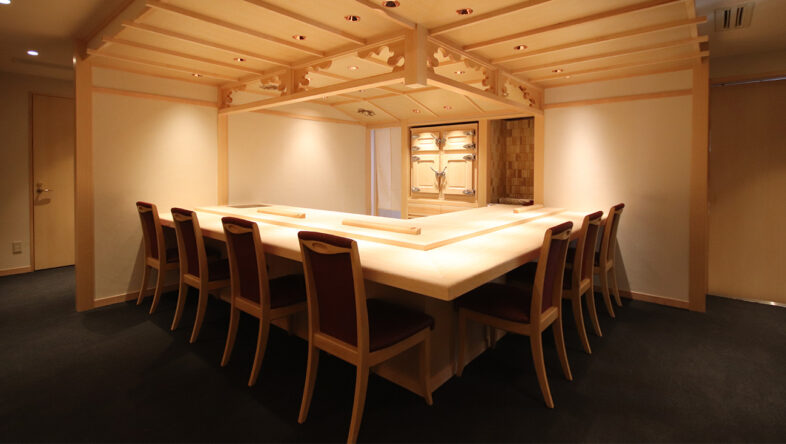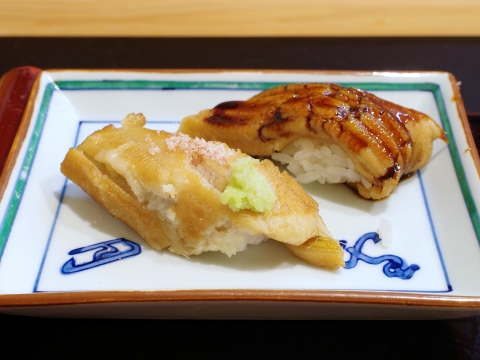
“Anago nigiri sushi” is a type of sushi where eel, simmered and cut into a fillet, is placed on top of vinegared rice and brushed with a sauce called “tsume.” The head and bones of the eel are simmered to create a broth, which is then seasoned and reduced to make the tsume.
When cooked, anago (conger eel) becomes very tender. On the flip side, this means it also falls apart easily. “Falling apart” refers to the dish becoming mushy and falling apart. The fish’s bones and flesh become mushy, resulting in an unappetizing appearance.
There are two solutions to prevent falling apart.
The first is to wait until the anago broth has cooled before removing the eel. This is the most effective method to prevent falling apart. As the eel cools, the gelatinous substance in the flesh solidifies, allowing it to be easily handled even when the anago broth has cooled.
The downside of this method is that the eel solidifies in a curled shape. When using it for nigiri sushi, it might be more convenient if the eel is stretched out. Additionally, since the eel hardens when cooled, forcing it flat while it’s hard can cause the flesh to crack.
The second method is to cook the eel in a bamboo basket and remove it while it is still hot.
That’s all you need to do to prepare the anago.
Next, we will describe the characteristics of anago itself. The naval (actually the anus) in the middle of the body serves as the border separating the head part (top) and tail part (bottom) of the eel. The fat and umami are distributed better on the top. People used to say that since the bottom moves more it is more tasty. This applies to fish in general.
Additionally, in sushi restaurants, it’s also often said, “the top should be served skin-up and the bottom should be served skin-down.” Please refer to the following for explanations of skin-up and skin-down.
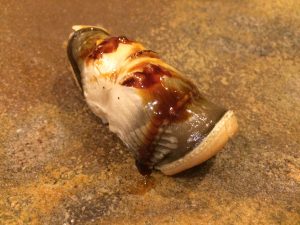
As shown in this image, skin-up means that the skin side is on top and the meaty side is on the rice.

As shown in this image, skin-down means that the meaty side is facing up and the skin side is on the rice.
To tell the truth, anago easily melts apart when it is boiled and broth enters the part where it separates, so the appearance is not as appealing. In this case, it is better to make sushi using skin-up. But unless the crack is extremely obvious, whether to skin up or skin down is up to the sushi chef’s discretion. Skin-up can be cooked with tsume, and skin-down can be seasoned with salt and citrus juice to bring out the flavor.
For your reference.
We hope this information will be helpful.

Revision date: May 30, 2025
Share this article
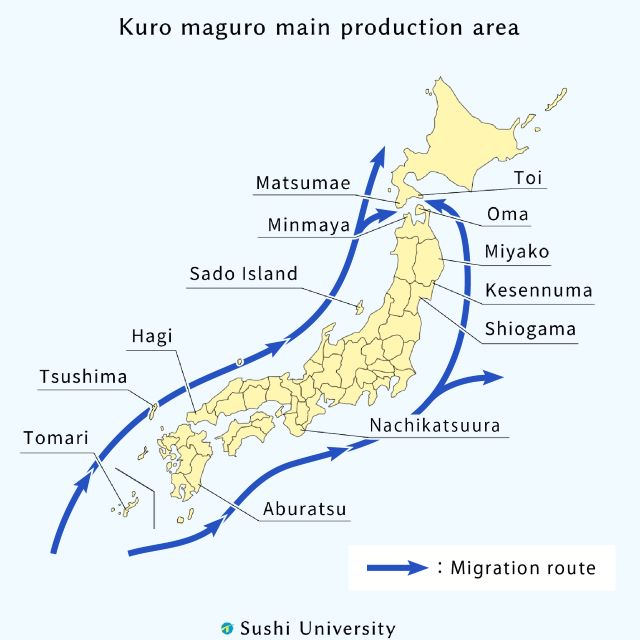
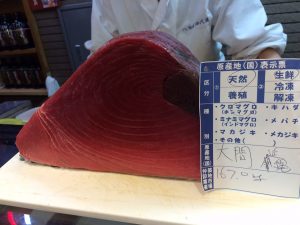 Then, when the sushi chef gets the tuna, he first separates the red, lean meat and the fatty toro portion, rewraps them separately, seals them in plastic, and puts them on ice. Next is waiting for the “young” meat, not yet suitable for eating, to mature. The number of days the fish will be rested depends on the size of the fish and the temperature. The smaller the cut and the warmer the temperature, the shorter the rest time. Generally the time is from 3-14 days.
Then, when the sushi chef gets the tuna, he first separates the red, lean meat and the fatty toro portion, rewraps them separately, seals them in plastic, and puts them on ice. Next is waiting for the “young” meat, not yet suitable for eating, to mature. The number of days the fish will be rested depends on the size of the fish and the temperature. The smaller the cut and the warmer the temperature, the shorter the rest time. Generally the time is from 3-14 days.